The Xiaomi Mi Note Pro and Mi Note Review
by Joshua Ho on September 11, 2015 9:00 AM ESTDisplay
For those that are well-versed in smartphones, it probably goes without saying why display quality is important. However, for those that don’t spend their lives reading about these issues, it is not necessarily all that obvious what makes a great display. It also won’t necessarily be obvious whether display quality really matters after a certain extent. As we’ll soon see, it turns out that there are a number of factors that influence display quality that won’t be on any normal specification list. There are some obvious metrics to look at like maximum brightness and static contrast, but something like color reproduction is often intensely personal. What looks great to some people might be excessively neon to others. What looks realistic and natural to some might be dull and dead to others.
In order to try and bring some level of objectivity to these issues, we rely on an external professional equipment (spectrophotometer and colorimeter) to quantify our display observations. For our spectrophotometer and colorimeter, we’ve standardized on X-Rite’s i1Pro2 and i1DisplayPro respectively. In order to effectively use this hardware, we also use SpectraCal’s CalMAN 5 with a custom workflow to record data and present it in a useful manner. To try and make our color observations somewhat objective we’ve elected to test color reproduction against the sRGB gamut, which is the standard for all web content and color in general, along with a gamma curve of power 2.2.
Mi Note
Mi Note Pro
In the case of the Xiaomi Mi Note and Mi Note Pro, we see two different kinds of displays from the same vendor. For the Mi Note, a JDI 1080p LCD is used while for the Mi Note Pro we see a JDI FBC20 1440p LCD. Both have a full RGB stripe, so it’s important to keep in mind that an AMOLED display of the same resolution will often have less perceived resolution due to the difference in subpixel arrangement. Subjectively, the resolution difference here is surprisingly small between the two, but I suspect that this is because the Mi Note Pro has a rather obvious ITO grid that can affect display clarity.
Color shifting with respect to viewing angles with both is subjectively relatively low, but there are some problems with contrast decreases/uneven luminance shifts that happen when you rotate the display at a constant viewing angle with something other than pure black on the display. I would say that I can probably count on one hand the number of LCD-equipped phones that don’t exhibit this problem though like the HTC One M9+, iPhone 6, and the LG G4.
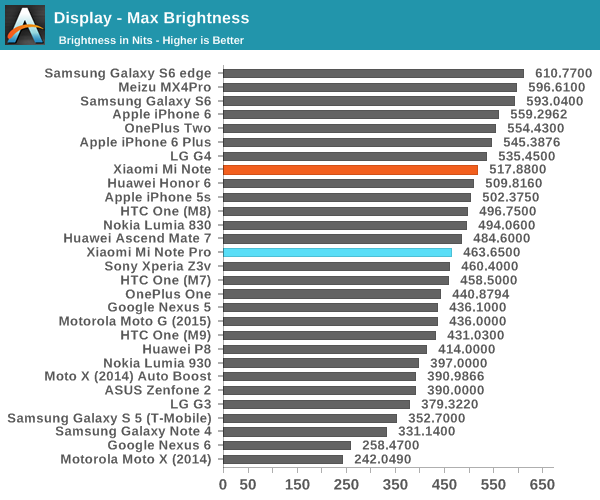
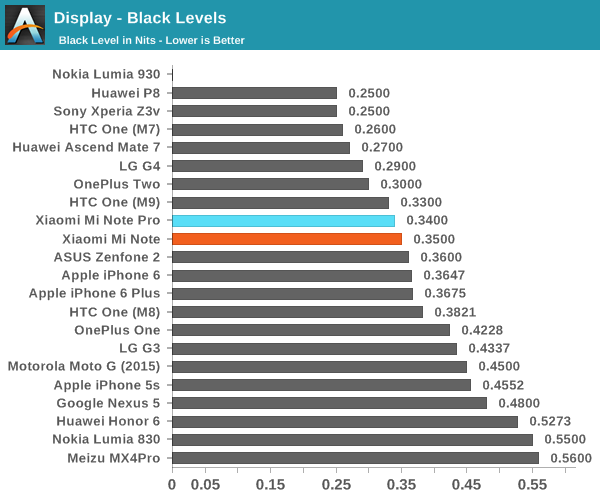
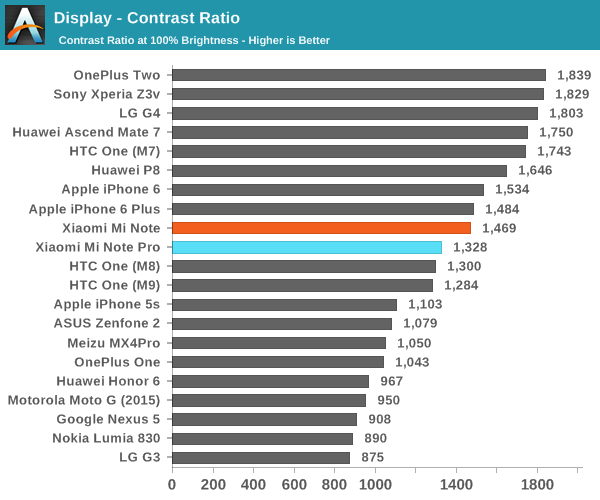
Moving on past some subjective observations, we can take a look at display luminance and contrast, which generally is a strong determinant for outdoor visibility in most cases as reflectance tends to be mostly similar amongst smartphones today. In this test, we can clearly see a difference between the two displays as the 1440p display does end up dimmer with reduced contrast. However, due to the sunlight display feature of the Mi Note Pro in practice I actually found it to have a similar, if not better outdoor visibility when compared against the Mi Note.
For those that are unfamiliar with what Xiaomi’s Sunlight Display feature is, this effectively an implementation of Apical’s Assertive Display technology. This technology is a form of content-adaptive backlight control in which the gamma and some other characteristics of the displayed image are altered in order to increase the visibility of darker aspects of the display, while retaining apparent contrast within the image so it doesn’t look washed out. For those that don’t care about the technology behind it, all that needs to be said is that it absolutely works, and it works incredibly well at improving sunlight visibility.
Mi Note
Mi Note Pro
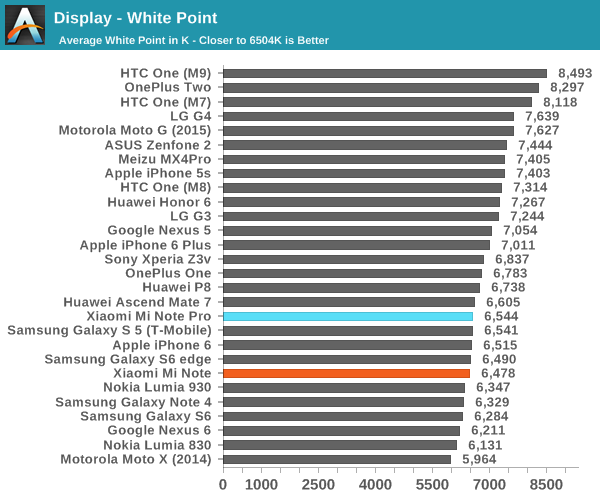
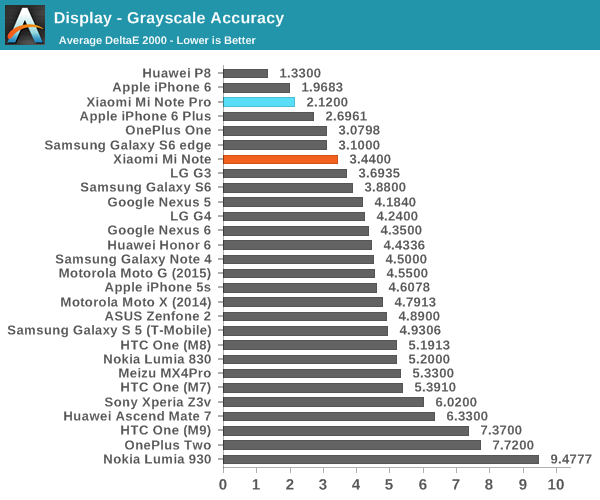
In our grayscale test, the Mi Note and Mi Note Pro were both set to standard contrast, but the Mi Note also required an extra adjustment to the “cool” color temperature as the “neutral” and “warm” were both extremely warm/red. After doing these changes, you can see just how well calibrated the Mi Note and Mi Note Pro are in grayscale. The Mi Note isn’t quite perfectly consistent, but the extra money you pay for the Mi Note Pro seems to have gone into turning good into great. In both cases, it’s interesting to note that the gamma curve is such that gamma is reduced near black, but raised near white, likely done to improve contrast in the near-white region.
Mi Note
Mi Note Pro
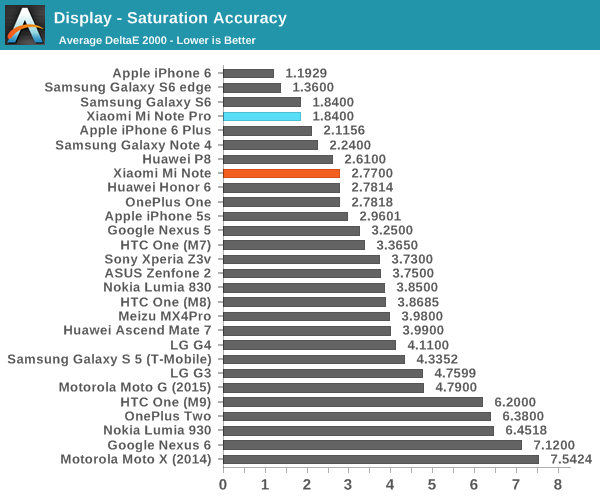
Moving on to the saturation/gamut test, both are fully capable of adhering to sRGB gamut. The Mi Note does have some strangeness going on with the gamut control, but overall calibration is acceptable as average error ends up below 3. The extra money that you pay for the Mi Note Pro at least partially goes into calibration, as the Mi Note Pro has incredibly well-calibrated saturation sweeps in this test, and follows the sRGB gamut very closely.
Mi Note
Mi Note Pro
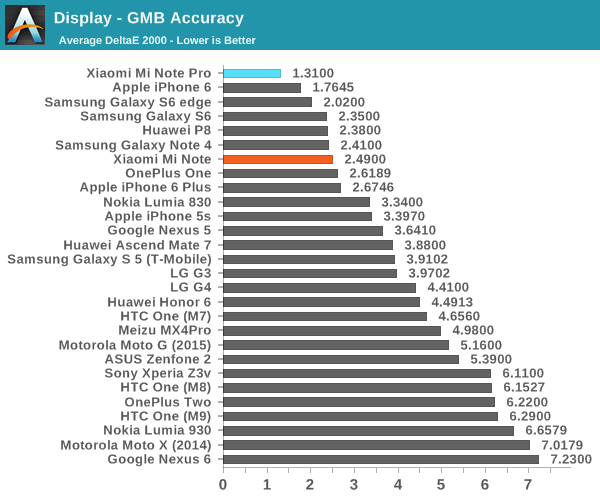
In the ColorChecker test, we see a similar pattern. The Mi Note delivers acceptable color calibration across the board with good hue accuracy, but the Mi Note Pro reaches almost absurd levels of calibration accuracy. There’s really not a lot of reason to improve color calibration past the point that Xiaomi has reached here, which is surprising when a number of OEMs continue to avoid proper sRGB calibrations. The Mi Note Pro is arguably better here relative to the Mi Note, as you get a higher resolution and better color calibration, but the difference in resolution and color calibration could be considered to be relatively minor. Both phablets have great displays with no real reservations.


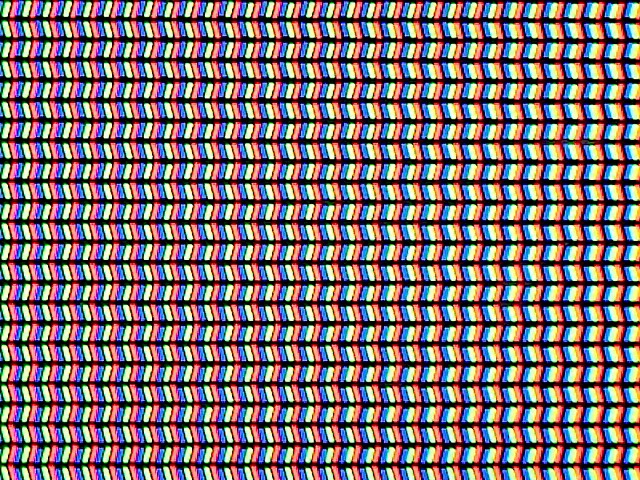

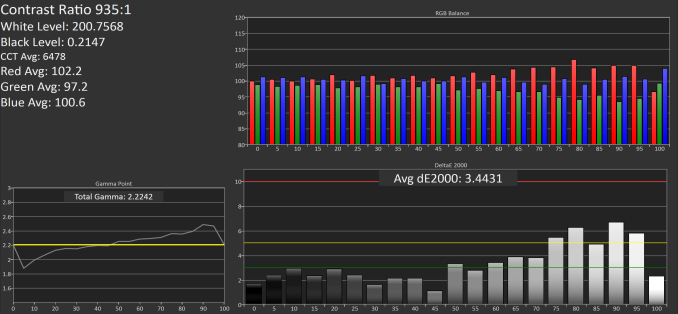

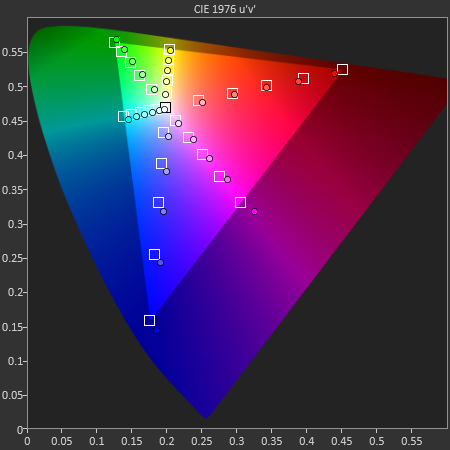
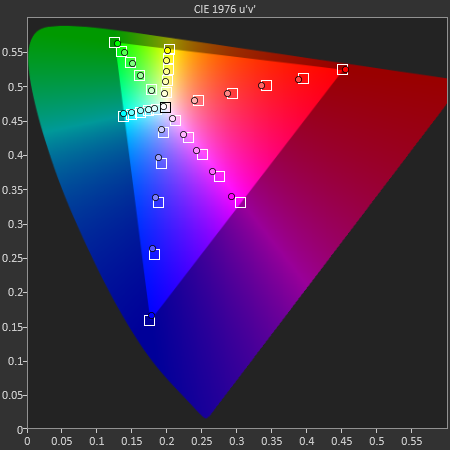
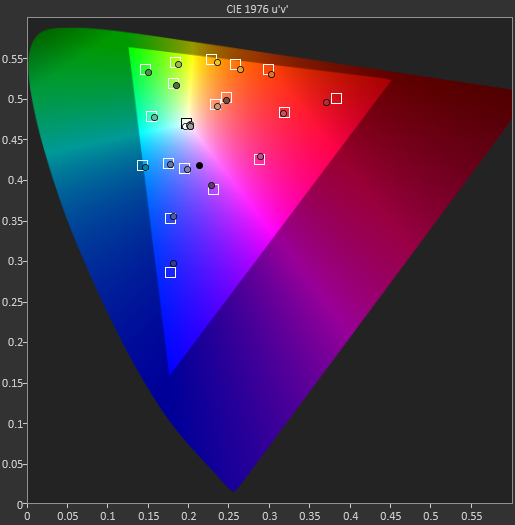
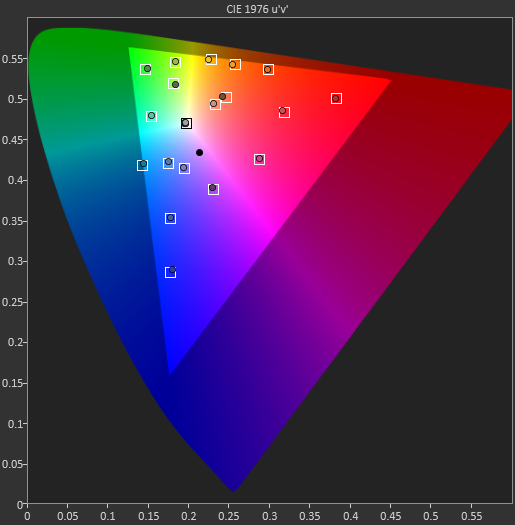








94 Comments
View All Comments
CrazyBernie - Wednesday, September 16, 2015 - link
Sorry about the late arrival... but perhaps someone could create a region primer article/chart that could then be linked in each phone review? Doesn't really matter to me, since anything international means "Not on Verizon." I do still like reading about new phones though... I've been thinking about branching out from Verizon for a secondary, work related phone.leexgx - Friday, September 25, 2015 - link
i happy that your looking at giving more detailkey parts are is it USA (maybe even Verizon's CDMA network phones are rarer outside the USA), EU or HK/China/Asia phones
as most HK/China/Asia phones Lack band 20 on 4G and lack 3g900 so are useless on vodafone and O2 in the UK and for 4G most parts of the EU and the USA , where as USA phones norm lack 4G compatibility at all in the EU due to odd bands used (i assume by mobile operators to make sure you can only buy a USA phone)
please also list supported 3g/4G bands and their frequencies, in the EU its needs to support Band 20 (800), 3 (1800), band 7 (2600)
in the USA unknown to me (uk me) as seems to be a miss match of bands that are used and thats just for AT&T and T-mobile (for CDMA phone i probably would only buy a subsidized phone if i was on Verizon)
but 4G is a mess (something like 20-30+ 4g bands) compared to 3G and 4G as most EU phones support most networks in the world (quadband phones) even AT&T or t-mobile real 3G network (not fake 4g dc-hspa+ which is 3G)
Archipelago - Saturday, September 12, 2015 - link
You think the only people who read Anandtech are in the U.S.?user_5447 - Friday, September 11, 2015 - link
Wow, OnePlus Two display results look really bad. Plus battery life regressions (S810?).Full review coming soon?
Ian Cutress - Friday, September 11, 2015 - link
Ah, my bad. I was supposed to those data points out and leave them for the its own review. We're doing some analysis on the OPT results and will update in time.darkchazz - Friday, September 11, 2015 - link
They might as well redo the OnePlus One display measurements, because cyanogen has removed François Simond's excellent calibration with an update long ago.It has a very bluish white point now.
smartthanyou - Friday, September 11, 2015 - link
Android 4.4 and 5.0? I think that says all that needs to be said about updates and support.anonymousmonkey54 - Saturday, November 14, 2015 - link
Actually, XiaoMi has been VERY good with updates. They update biweekly IIRC. Since MIUI is a complete overhaul of Android (even more than TouchWiz), they can't jump to the latest version of Android as quickly. They also support MIUI on a variety of phones other than their own, and that takes some of their efforts.i4mt3hwin - Friday, September 11, 2015 - link
Hmm, one plus two on all the chartsBMNify - Friday, September 11, 2015 - link
Thanks for the review Josh, will like to see you review other Xiaomi phones which are incredible value for money like Redmi 2 ($90) and Mi 4 ( $220). These phones are available officially at almost similar pricing in the largest smartphones markets that is China, India, Brazil, Taiwan, Singapore, Malaysia and Philippines.